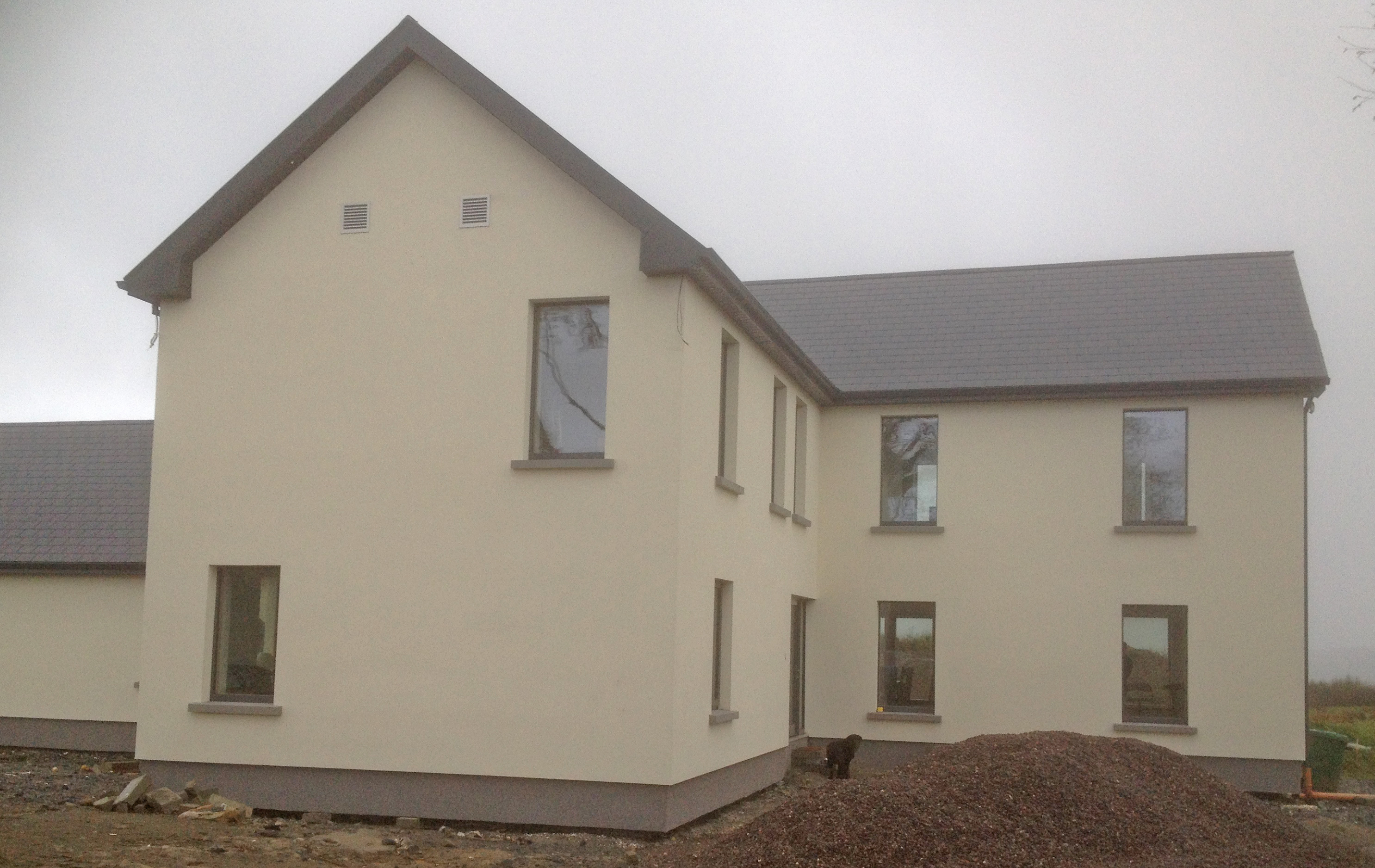The Passive designed house, constructed in 2014, is an example of a passive house that emphasizes energy efficiency and sustainable design. The house features a treated floor area of 235 square meters and is characterized by several key design and construction features:
Exterior insulation: The house incorporates externally insulated walls with 250mm of insulation. This insulation layer helps to maintain thermal comfort and prevent heat loss.
Floor and attic insulation: The house benefits from 300mm of floor insulation, providing effective thermal insulation from the ground. Additionally, 400mm of cellulose insulation is used in the attic to further enhance the building's energy efficiency.
Triple glazing PVC windows: The use of triple-glazed PVC windows from Munster Joinery contributes to excellent insulation and minimizes heat loss through the windows.
Air tightness: The building boasts an impressive air tightness level of 0.56 air changes per hour at 50 Pascals (ACH N50). This high level of airtightness helps maintain a consistent indoor temperature and reduces energy consumption.
Design and construction team: The design of the house is credited to Tim Horgan, a Passive House designer. The construction was carried out by Tommie Finnegan, emphasizing the importance of expertise in passive house construction.
Design criteria: The design criteria for the house were to not exceed a heat load of 10 watts per square meter on the coldest day, equivalent to 2.35 kilowatts of heating demand.
Heating and ventilation: The house features a Nilan Compact P system with a 2KW backup duct heater. While the duct heater is deactivated, the system provides heating and ventilation. Additionally, a wood pellet stove is installed in the living room.
Heating system: The house does not feature an underfloor heating or radiator system, and yet, it has maintained an indoor temperature of at least +20°C during the winter of 2014.
This project showcases a successful integration of passive house design principles, high-quality insulation, and energy-efficient heating and ventilation systems. The use of the Nilan Compact P system and wood pellet stove underscores the commitment to energy efficiency and sustainability. The Passive designed house built in 2014 is a testament to the feasibility of creating a high-performance, energy-efficient, and comfortable living space.
Homeowner testimonial:
Compact P heat pump with 2KW back up duct heater and a pellet fuel in living room.
When we started planning to build in 2008, we never thought we would end up in a passive house – in fact, we didn’t even know what a passive house was. Delays of almost 2 years in planning meant we had a lot of time to research building methods and it was this reading in the Passive House magazine that led us to Maurice Falvey (who designed/supplied our heating system) and in turn Tim Horgan, and Tommie Finnegan who built the house for us.
All through the build we had our doubts. Like most Irish people we were terrified of being cold. We had lived in a house that was impossible to heat for 5 years and with an immersion water heating system that had to be assisted by kettles of boiling water just to have a bath. How different could we expect the new house to be?
On moving in in February 2014 we were completely won over by the system. Everything Maurice predicted came through. We now have a constant temperature throughout the house and spend our time in t-shirts. We have so much hot water that we offer guests tea, coffee or a shower and we get great joy in watching people strip off their layers of winter clothing when they come to visit. The running cost of the Heat Pump is so small that is almost insignificant – an insignificant cost for the most significant detail of the house.
Would I recommend Maurice and his system! Without a doubt and with my hand on my heart, I can say that the Nilan system has changed our way of living. Not a day goes by when I am not thankful for the building choices we made, often guided by Maurice and Tim. We are living the dream and summer is no longer my favorite day of the year – summer temperatures in our house is the norm, not the exception.
Thank you, Maurice.
Angie, Lei, Ri-Ann and Regan


